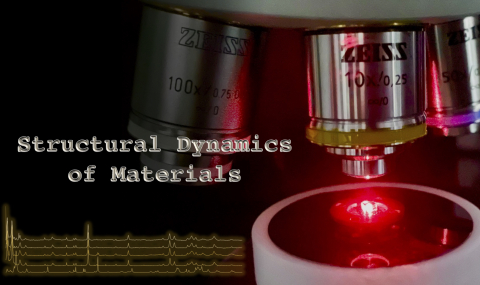Organic semiconducting crystals have many applications in the (opto)electronic industry. Examples include light-emitting diodes (LED), field-effect transistors (FET), and solar cells.
Unlike inorganic semiconductors, where covalent or ionic bonds connect atoms, weak, Van der Waals intermolecular forces hold the organic semiconductors. The connection of the molecules by weak forces has a profound effect on the crystal's electronic and structural dynamics. We study the relationship between the motion of the molecules and the motion of the electrons inside the crystals.
More specifically, we are studying the lattice dynamics of organic crystals using our home-built low-frequency Raman system while applying our temperature-dependent and polarization-dependent capabilities. We discovered a unique behavior of the lattice dynamics of organics semiconductors where we find strong and specific coupling between vibrational modes. [1]
We are currently working on understanding this effect's physical origin by applying an analytical theory of Raman scattering.
In addition, we have studied the temperature evolution of the lattice dynamics of an organics semiconducting crystal, BTBT, and its molecularly modified derivative ditBu-BTBT, diC8-BTBT, diPh-BTBT, and DNTT. We show how different types of chemical modifications affect lattice dynamics. The alkyl type modifications (ditBu and diC8) introduce solid-solid phase transitions while alkyl type and π-conjugated moieties (diPh and DNTT) suppress the evolving evolution vibrational symmetries found in BTBT. This work has been submitted to ACS Materials Au, under a special issue of the "2022 rising stars" and is currently under review.
[1] M. Asher, et al., Advanced Materials (2020), 1908028, 32


